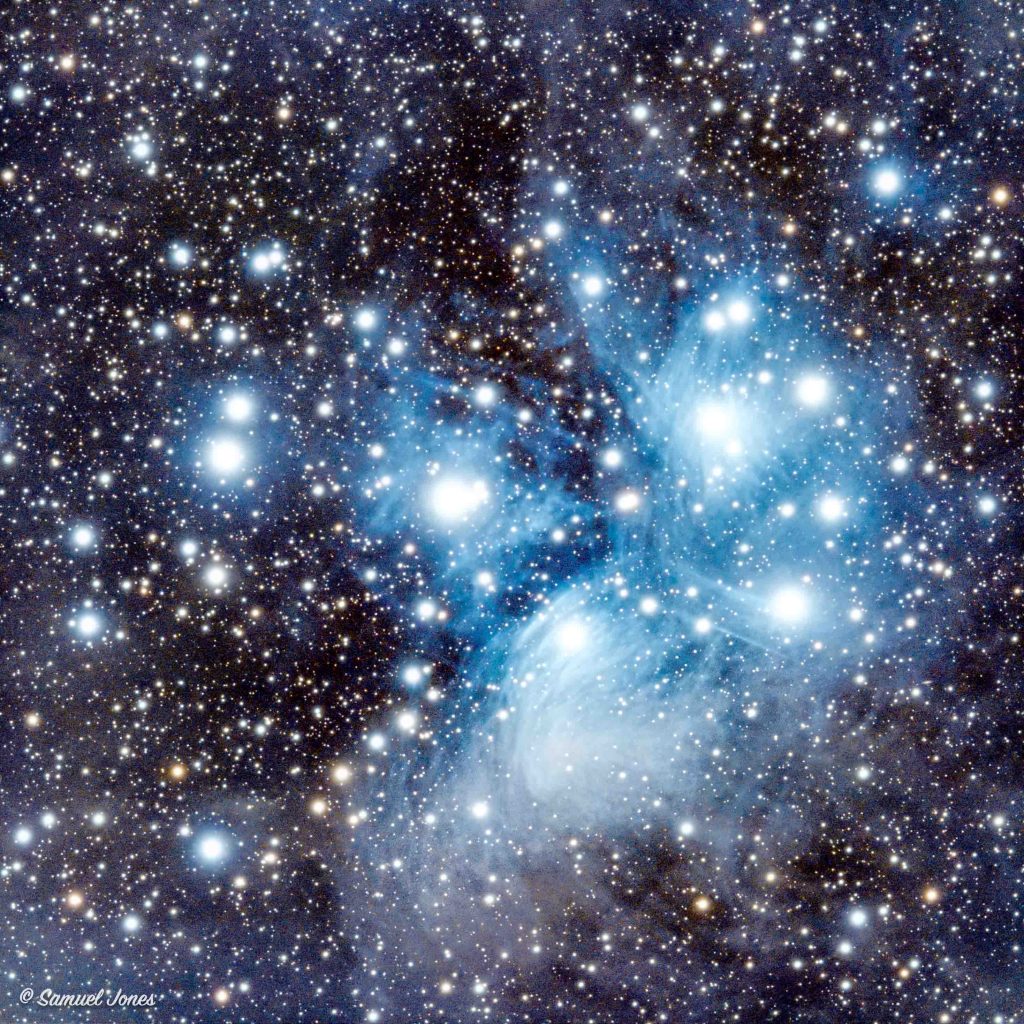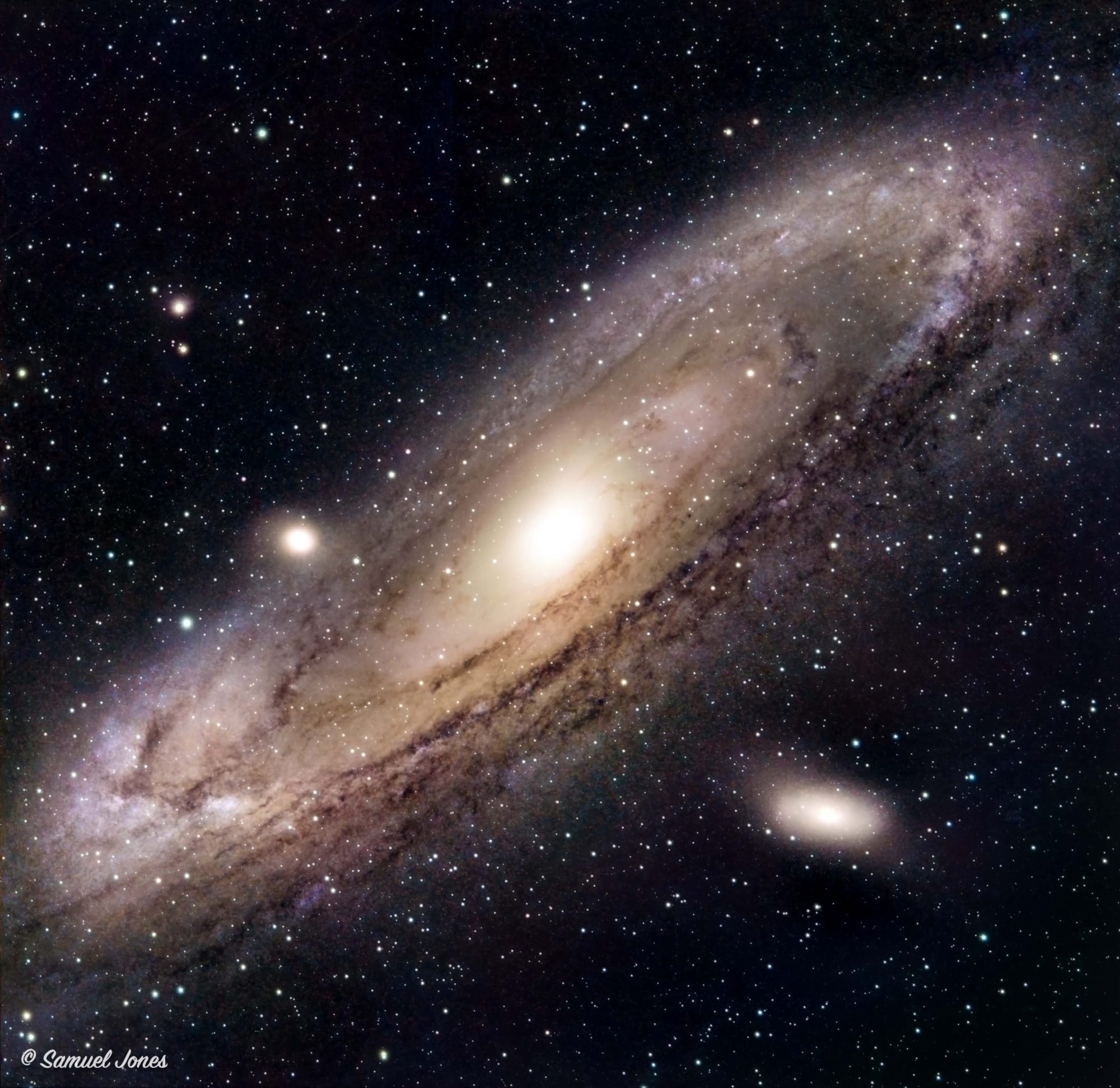
He who made the Pleiades and Orion, and turns deep darkness into the morning and darkens the day into night, who calls for the waters of the sea and pours them out on the surface of the earth, the Lord is his name;
Amos 5:8
The Pleiades (Messier 45), also known as the “Seven Sisters” is an open star cluster near the constellation Taurus. At 444 light years, it is one of the closest star cluster to our solar system. It is easily visible with the naked eye, even in light polluted skies. The blue color comes from the hot temperature of the stars in the cluser that formed within the last 100 million years.
Within the star cluster is the nebula NGC 1432. A reflection type nebula, which has been identified as a HII region. Reflection nebula are clouds of dust and gas that are not ionized like emission nebula, and therefore do not emit light. They can only be seen by the light reflecting off of them from nearby stars, requiring longer exposure times to see them and reveal their details. This reflection nebula is not locked into the cluster and is estimated to be moving at 18 km/s relative to the cluster.
The Pleiades has been recognized as a point of interest by many people groups throughout history. The Holy Bible mentions the Pleiades by name three times, once in the book of Amos and twice in the book of Job, which are both among the oldest books in the Bible. Some other interesting history bits from Wikipedia, In Mesopotamia, the MUL.APIN compendium, the first known Mesopotamian astronomy treatise, discovered at Nineveh in the library of Assurbanipal and dating from no later than 627 BC, presents a list of deities [holders of stars] who stand on “the path of the Moon” which includes the Pleiades. In some Turkish communities, the year was divided into two seasons based on the visibility and invisibility of the Pleiades in the night sky, which is between November and May.
Equipment used:
Telescope: Astro-Tech AT60ED + 1.0x field flattener (f6)
Mount: ZWO AM3
Camera: ZWO ASI533MC Pro
Autoguider: 30mm svbony scope + asi120mm mini
Filter: Optolong UV/IR cut filter
This image consists of over 1100 90 second exposures stacked in Deep Sky Stacker and processed in Siril and Photoshop. GraxPert was used for denoising.
